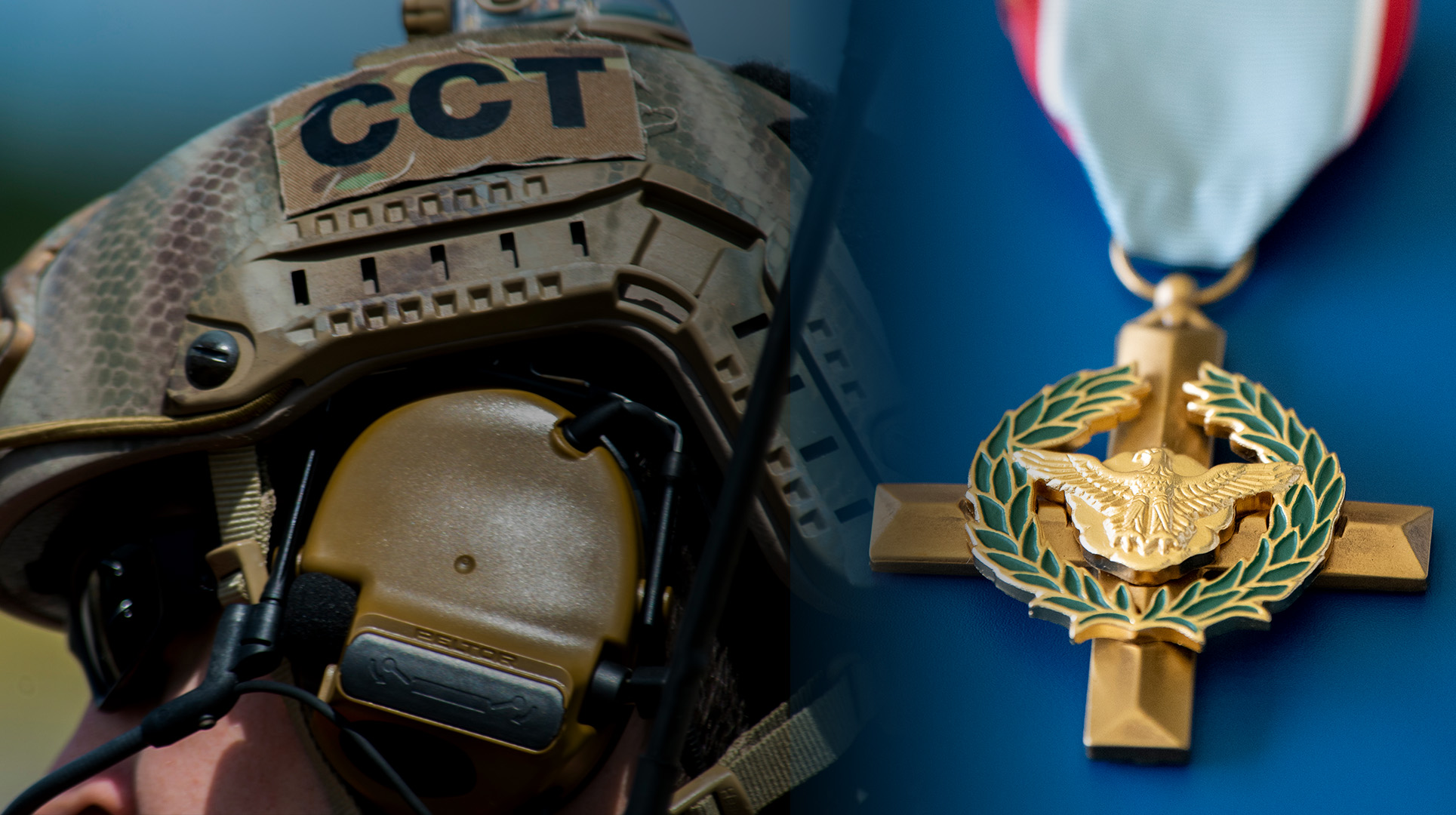

An Air Force combat controller dodged bullets, artillery shells and even direct fire from enemy tanks as he coordinated U.S. firepower against an oncoming battalion of Russian and Syrian tanks and fighters in early 2018. By the end of the four-hour shoot-out, the Air Force commando had directed airstrike and artillery that wiped out hundreds of Russian and Syrian soldiers and vehicles, while an isolated post of about 40 U.S. special ops troops suffered no casualties. The Air Force confirmed last week that the commando was awarded the Air Force Cross — a valor award second only to the Medal of Honor — in September 2020 for his actions in the Battle of Khasham, an engagement widely covered for its heavy death toll but whose details remain murky.
The combat controller, according to the Air Force Cross citation, “prevented an isolated force of Americans and coalition personnel from being overrun by a professionally trained and technically proficient combined arms enemy assault comprised of main battle tanks, armored personnel carriers, heavy artillery tubes and a battalion of infantry soldiers.”
The secret Air Force Cross was uncovered by Washington Post journalist Kyle Rempfer, who obtained the citation through a Freedom of Information Act request. The Air Force provided the citation and order for the award, but redacted the name and other identifying information of the combat controller. A combat controller, or CCT, is an Air Force special tactics operator who plans, targets and directs air support for special operations missions. The citation noted that the airman was assigned to the 24th Special Operations Squadron, the Air Force’s secretive unit within the Joint Special Operations Command. Rempfor, who was an Air Force combat controller before leaving the military and joining the Washington Post, provided the citations to Task & Purpose.
The response to the 2023 FOIA came after a delay, Rempfer said on X, but the citation offers some official U.S. military details on both the combat controller’s actions during the wider battle.
The Battle of Khasham saw roughly 500 troops supporting Syrian dictator Bashar al-Assad, including members of the Kremlin-aligned Wagner Group mercenary company, attack American special operations forces, only to suffer heavy casualties as the soldiers, a quick response force and major air support repelled the assault.
Subscribe to Task & Purpose Today. Get the latest military news and culture in your inbox daily.
On February 7, 2018, pro-Assad forces advanced on an American outpost in the town of Khasham near Deir-ez-Zor. Approximately 30 soldiers from Delta Force, the 75th Ranger Regiment and the combat controller were at an old Conoco gas plant, alongside mostly Kurdish Syrian Democratic Forces, a major partner in the fight against ISIS. A platoon of supporting forces, comprising U.S. Marines and Army Special Forces, were stationed approximately 20 miles away. By nighttime, hundreds of Wagner mercenaries and pro-Assad troops, with more than two dozen vehicles and several tanks, had massed in Khasham, on the east side of the Euphrates River. Around 10 p.m. they began attacking the American outpost with mortars, gunfire and tank cannons.
American forces were in contact with a Russian liaison nearby, who stressed that no members of the regular Russian military were a part of the attacking forces. Once that was confirmed, the commandos began firing back, and calling in air support. And it came in force: F-22 and F-15E fighter jets, as well as B-52 bombers, AC-130 gunships, AH-64 Apache helicopters and Reaper drones began striking Syrian and Wagner troops. American artillery stationed nearby also opened fire, helping the outnumbered U.S. forces repel the attack.
The Air Force Cross citation is sparse on details of the battle itself. Notably, it does not identify who the enemy forces that the special operations forces and their partners defeated actually were, or provide information on how the battle ended.
The CCT, the citation said, “exposed himself to artillery, rocket, and mortar bombardment, and direct fire from main battle tanks, rocket-propelled grenades, and heavy automatic weapons during the hasty defense of a United States Special Operations Forces operating location.”
As Rempfer noted, it does not appear that the Air Force or Department of Defense as a whole ever publicly announced the award.
As fighting stretched on, an American quick response force arrived at the scene, providing supporting fire while American aircraft continued to rain down strikes. A New York Times report on the Battle of Khasham, which drew its information from several interviews and documents with Pentagon officials, noted that more than one CCT was involved in the fighting. According to the New York Times, once reinforced, “[a] few of the commandos, including Air Force combat controllers, worked the radios to direct the next fleet of bombers flying toward the battlefield.” Those airstrikes proved essential, with the bombardments eventually driving the pro-Assad forces back after four hours of fighting. Then-Secretary of Defense Jim Mattis would later describe the enemy forces as being “annihilated.”
As for the end results, no American service member was wounded or killed. One SDF member was injured, the U.S. Army said at the time. The same could not be said for the pro-Assad forces. The actual total has never been fully confirmed, with the U.S., Syria, Russia and outside investigators all reporting different casualty figures. It’s believed that up to 300 Syrian and Wagner Group fighters were killed.
The latest on Task & Purpose
- Marines will land on Normandy beaches to commemorate D-Day’s 80th anniversary
- Air Force raises maximum amount for retention bonuses to $180,000
- Former Admiral’s $500,000 retirement job was a bribe, prosecutors say
- Army special operations officer under investigation after shooting
- Meet the soldier who is taking the Army combatives scene by storm